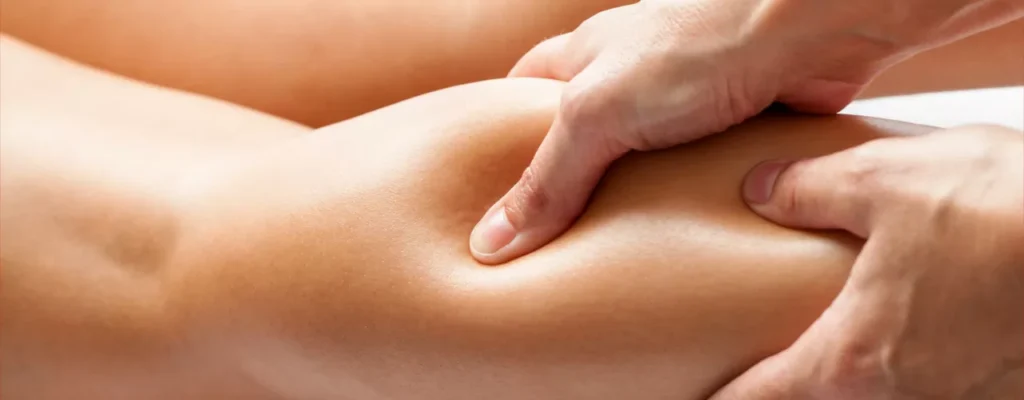

If you’ve ever had a muscle ache, stiff neck, or a nagging back pain, chances are you’ve considered getting a massage. Or maybe, if the pain was persistent, you booked an appointment with a physiotherapist. But have you ever wondered what exactly is the difference between a physiotherapy soft tissue mobilisation and a massage by a masseuse?
It’s a common question, and understandably so. Both involve hands-on techniques, both feel good (mostly!), and both seem to target tight, sore muscles. But despite their similarities, physiotherapy soft tissue mobilisation and massage therapy are distinct in purpose, execution, and long-term benefits
Let’s break it down.
1. The Goal: Treatment vs. Relaxation
At the core of the difference lies the intent.
- Physiotherapy Soft Tissue Mobilisation (STM): This is a targeted approach used by physiotherapists to treat specific musculoskeletal issues. The goal is to improve movement, reduce pain, and enhance function by addressing restrictions in soft tissues such as muscles, fascia, tendons, and ligaments. STM is often part of a broader rehabilitation plan designed to address an underlying injury or dysfunction.
- Massage by a Masseuse: Massage therapy, on the other hand, is generally aimed at relaxation, stress relief, and temporary relief of muscle tension. While it can certainly improve circulation, ease muscle soreness, and even enhance well-being, it does not specifically target or treat underlying musculoskeletal conditions.
2. The Practitioner: Qualifications & Expertise
Another major distinction is the level of training and expertise of the practitioner.
- Physiotherapists who perform soft tissue mobilisation undergo years of rigorous academic and clinical training. They hold degrees in physiotherapy and are skilled in diagnosing musculoskeletal conditions. They use STM as one part of a larger treatment strategy, which may also include exercises, joint mobilisation, electrotherapy, and movement retraining. Their hands-on work is not just about making you feel good—it’s about functional recovery.
- Masseuses/Massage Therapists typically complete shorter training programs that focus primarily on massage techniques and relaxation methods. While they can have extensive knowledge of bodywork, they do not diagnose conditions, prescribe exercises, or integrate massage into a structured rehabilitation plan.
3. Techniques Used
Although both approaches involve manual techniques, the methods differ in intensity and application.
- Physiotherapy Soft Tissue Mobilisation Techniques:
- Deep transverse friction massage (to break down scar tissue)
- Myofascial release (to ease tight fascia)
- Trigger point therapy (to release knots and referred pain points)
- Instrument-assisted soft tissue mobilisation (IASTM) using tools
- Muscle energy techniques (MET) for improving mobility
These techniques often involve controlled force and pressure to target deep-seated restrictions and restore function.
- Massage Therapy Techniques:
- Swedish massage (gentle strokes for relaxation)
- Deep tissue massage (firmer pressure for muscle knots)
- Aromatherapy massage (using essential oils for relaxation)
- Hot stone massage (using warm stones to relax muscles)
- Thai or Shiatsu massage (involving stretching and pressure points)
Massage therapy is usually more about comfort and easing tension rather than fixing a biomechanical issue.
4. Pain vs. Comfort Level
People often say, “A good massage should hurt a little.” But that depends on what you’re looking for!
Massage Therapy: Typically, massage aims to be a soothing and pleasurable experience. Even deep tissue massage, though sometimes intense, is designed to be tolerable and more about relieving immediate tension rather than fixing a musculoskeletal dysfunction.
Physiotherapy STM: This can sometimes be uncomfortable because it is designed to address deep tissue dysfunction. If you have tight fascia, trigger points, or scar tissue, working on them may cause temporary soreness. However, the discomfort is therapeutic, meaning it is helping to restore normal function.
5. Immediate vs. Long-Term Benefits
- Physiotherapy STM: While it might not feel like a luxury spa treatment, STM aims for long-term benefits. It helps improve movement, function, and pain levels in a way that promotes lasting change. STM is often combined with exercise therapy to ensure the benefits extend beyond the treatment session.
- Massage Therapy: Massage provides immediate relaxation, improved circulation, and short-term relief from muscle tightness. However, if the root cause of your pain is biomechanical (such as muscle imbalances, poor posture, or joint dysfunction), massage alone will not resolve the issue permanently.
6. Who Needs What?
So, should you book a massage or see a physiotherapist for soft tissue mobilisation? It depends on what you need.
- Choose Physiotherapy STM if you:
- Have a specific injury (e.g., sports injury, whiplash, carpal tunnel syndrome)
- Experience chronic pain or mobility restrictions
- Have postural imbalances or recurring muscle issues
- Need a structured rehab plan for recovery
- Choose Massage Therapy if you:
- Are looking for stress relief and relaxation
- Have general muscle soreness from daily activities
- Want to improve circulation and overall well-being
- Enjoy the therapeutic benefits of touch
7. Can You Have Both?
Absolutely! In fact, many people benefit from a combination of physiotherapy and massage therapy. Some physiotherapists even collaborate with skilled massage therapists to provide a well-rounded treatment approach. If you’re recovering from an injury but also want the relaxation benefits of massage, integrating both into your self-care routine can be a great option.
Final Thoughts
Physiotherapy soft tissue mobilisation and massage therapy both have their place in healthcare, but they serve different purposes. If you’re looking for a structured, evidence-based approach to pain relief and functional recovery, physiotherapy STM is the way to go. If relaxation and stress relief are your primary goals, a massage from a skilled therapist might be just what you need.
Understanding these differences will help you make informed decisions about your health and well-being—so you can get the right treatment at the right time. Whether it’s physiotherapy or a massage, taking care of your body is always a good investment!
To book your appointment, call on the number below-
📞 Call 01604 385343 (Northampton) or 01908 713973 (Milton Keynes) or Book Online today!

